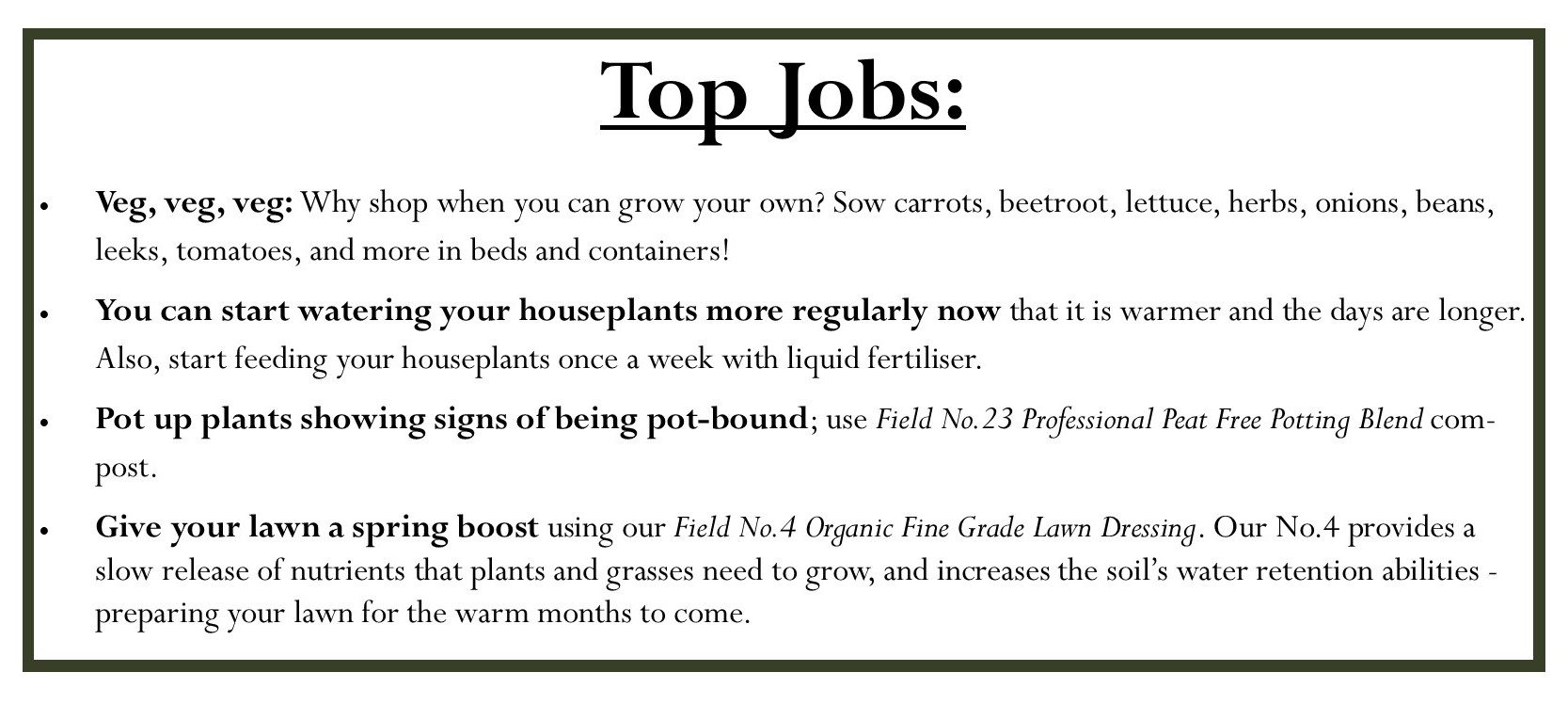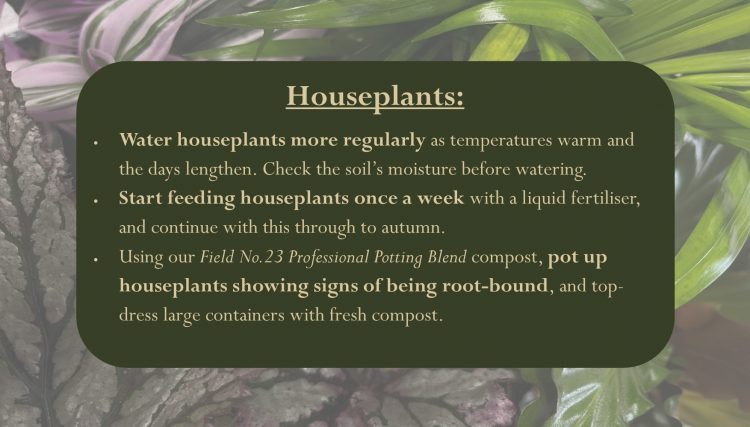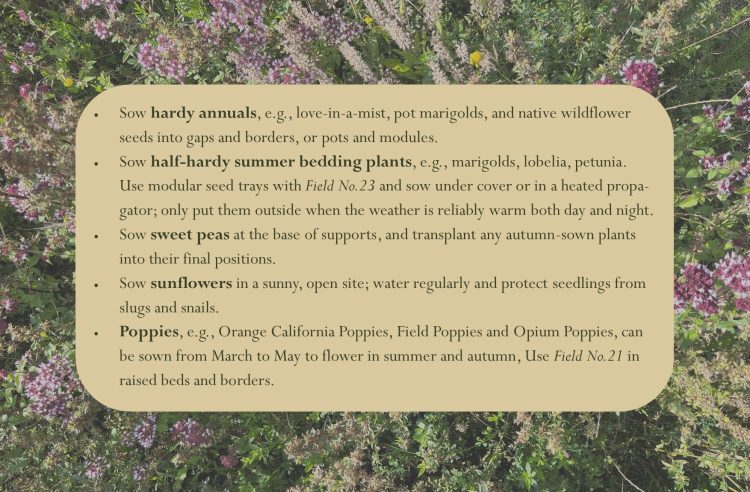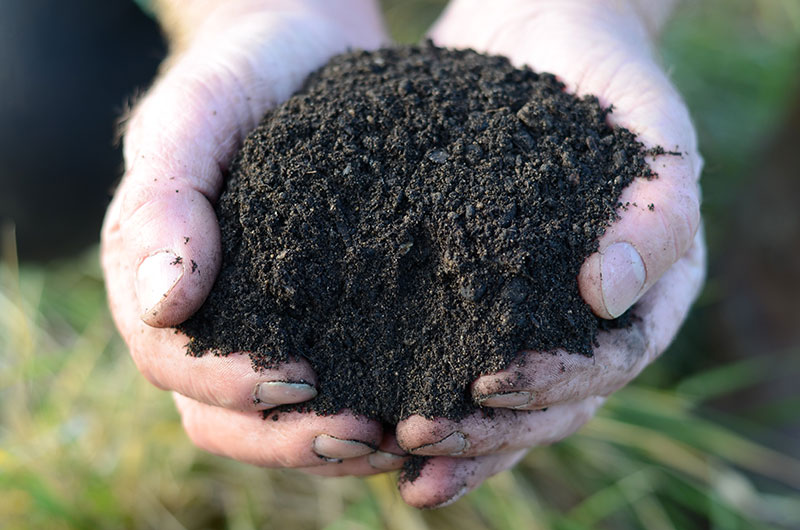Happy April! And happy it is – its spring!
We are a few days into the Easter holidays; here are just some ideas for what to do in your garden or outside this holiday:
• If you want to get out of the house, visit a National Trust Garden, or have a nose around your local open garden – check out the National Garden Scheme website, or Open Gardens website and find gardens around your area!
• You could also encourage your kids to make an insect hotel or create garden markers. Click here for some more child-friendly garden DIY ideas!
• Finally, teach your kids about where their food comes from; plant easy-to-grow fruit and veg, e.g., carrots, herbs, lettuce, courgettes, and tomatoes, in pots or borders. You don’t even need a garden – or even conventional pots, just sow the seeds in old boots, buckets, etc.
It is the growing season, so there is lots to be doing in the garden this month – lots of flowers to plant, and so, so, so many vegetables to fill your fridge! Have a read below…

General Garden Maintenance:
- Don’t forget the birdies: Keep putting out high-calorie food for your garden birds, especially now that they will be raising their young!
- Use a stiff-bristled brush or pressure washer to remove algae and dirt from paths, walls, paving, and patios. It is easier to do at this time of year before too much has grown.

Greenhouse:
- If you haven’t already, attach guttering to your greenhouse and install a water butt. This will make use of the ever-likely April showers and prepare you for a dry summer.
- Temperatures can still drop at night, and seedlings in particular do not like these wide temperature fluctuations; use a heated propagator or fleece cover if your greenhouse is mostly full of hardy mature plants.
- Ventilate your greenhouse on sunny days, but close windows mid-afternoon to retain heat at night.
Lawns:
Maintenance:
- Scarify patches of moss and remove weeds. Then give your lawn a boost to increase growth with our Field No.4 Organic Fine Grade Lawn Dressing. No.4 is rich in Nitrogen, this increases the lawn’s vigour and help prevent weeds and moss from establishing.
- Mow lawns when necessary and when grass is growing; aim to maintain a contain height throughout the year.
- Define lawn edges using a half-moon edging iron or space, creating a 7.5cm ‘gutter’ around the lawn. This prevents grass from creeping from the lawn on borders.
New lawns:
- Lay turf using our No. 26 Turfing Soil to create a new lawn.
- Sow a new lawn or re-seed dead patches from mid-April to early-May. Prepare ground for sowing by forking over and weeding before using our No.4 Organic Fine Grade Lawn Dressing. Check out our lawn Care bundle which includes this lawn dressing and a 1.75kg pouch of Barenburg All Rounder Grass Seed.
- To benefit the pollinators in your garden, leave a patch of your lawn to grow, or sow a wildflower meadow using our Field No.30 Wildflower Soil– part of our Wildflower Bundle.
Fruit & Veg:
Jobs:
- Place cardboard collars around stems of brassicas to deter cabbage root fly from laying their eggs.
- Transplant greenhouse tomatoes into growing bags or large containers, and tie in stems to supports. Use our Field No.23 Professional Potting Blend to re-pot.
- Look after your veg: water and hoe between the rows of seedlings regularly, as weeds grow rapidly at this time of year.
To plant:
Growing veg is deemed to be one of the most rewarding things to do in your outdoor space – and you don’t even need much of it: most of the following plants can be sown in containers and pots.
Use our Field No.23 Professional Peat Free Potting Blend compost when planting in pots. Use Field No.21 High Quality Planting Topsoil when establishing new beds, or mix Field No.1 Organic Soil Improver with the soil when planting in established beds.
- Potatoes: Plant first-early, second-early and maincrop potatoes in pots or beds.
- Chillies and Aubergines: it is your last chance to sow these seeds as they need a long growing season to do well. Use a heated propagator with Field No.23 to speed up germination.
- Herbs, e.g., Coriander, Marjoram, Parsley, Dill, Basil, Chives, and Fennel. Use No.23 to plant in pots and trays in the greenhouse.
- Garlic, shallot, and onion sets: plant in pots and every few weeks to extend their cropping period.
- Sow quick-growing microgreens, e.g., Kale or mustards, for nutrient-rich pickings in just a few weeks.
- Summer Cabbage: use Field No.23 when planting in pots, or Field No.15 Vegetable Planting Topsoil when planting in beds.
- Carrots can be sown directly outside, in well-prepared soil that is free of stones, or in containers.
- Beetroot: these grow in fertile, well-drained soil and does well in pots. Harvest the beetroot when they are the size of golf balls.
- Lettuce is best sown undercover, in seed trays or modules of Field No.23, and planted out into beds or pots when large enough to handle.
- Runner Beans and French Beans: sow in pots in the greenhouse. They are frost-tender so use a heated propagator for planting outdoors later.
- Cucumbers and Courgettes. Like the beans, cucurbits are frost-tender so a heated propagator may be used at first, then plant outside once all risk of frost has passed. Sow undercover, in individual 5cm pots in a greenhouse or sunny windowsill, before planting out in May or June.
Flowers:
Jobs:
- Continue deadheading spring bulbs and bedding, so they don’t waste energy setting seed.
- Top dress spring-flowering alpines with Field No.20 Horticultural Grit to reduce humidity in dry gardens and help prevent stem rots.
- Mulch beds and borders with Field No.12 Nutrimulch.
- Pot up plants showing signs of being pot-bound, with Field No.23 Professional Potting Blend compost: lift pots and see if roots are visible through drainage holes or pushing up on the surface. If so, try and gently lift the plant from the pot to examine the root ball. Ideally pot on to a container that is 30% larger or consider a permanent position in beds and borders.
To plant:
Use Field No.23 Professional Peat Free Potting Blend compost when planting in pots, containers, and hanging baskets, and Field No.21 High Quality Planting Topsoil when planting in beds and borders.

Trees & shrubs:
Jobs:
- Tie in climbing and rambling roses; tying roses as near to horizonal as possible restricts sap flow. This causes more side shoots to grow along the lengths of the stem and thus produce more flowers.
- Mulch roses, hedges, and shrub beds with 5-8cm of Field No.12 Nutrimulch. This will help to retain moisture during dry spells, represses weeds, and improves soil structure over time. Pay particular attention to mulching around rhododendrons, azaleas, and camellias, as flowering is impaired if they are allowed to dry out during late summer.
To plant:
Use Field No.1 Organic Soil Improver mixed with the spoil from the planting pit.
- Evergreens: In cooler areas and earlier in the month, you can still plant and move evergreen trees and shrubs (if the soil is not waterlogged).
- Deciduous hedging plants, shrubs, trees, and climbers. Like above, if you live in a colder area, you can still plant container-grown deciduous plants. Stakes and rabbit guards should be put in place at the time of planting, to prevent damage to root ball or bark.
- Fruit trees. Potted fruit trees, e.g., currants, gooseberry, citrus, and fig trees, can be planted out any time. Many dwarf fruit trees are suitable to grow in large pots; water more regularly than planting in the ground and top-dress with Field No.1 and spoil every spring.



